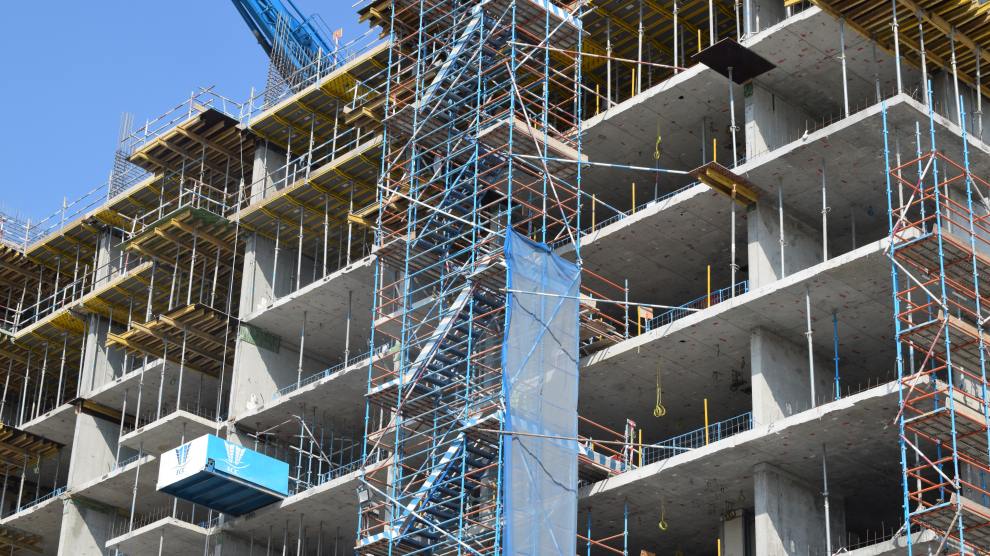After years of lobbying to get the government to pay attention to the problem of affordable housing, the Biden Administration has stepped up in a big way by implementing a series of administrative steps and proposing more than $300 billion of spending to address the issue.
The real estate industry, however, may find this a case of being careful what you ask for, objecting to the revenue allocations that might be used to pay for the new spending and have the potential to reduce the investment in new housing.
The need for affordable housing is at a critical point, as pent-up demand for housing and long-term undersupply has produced a cycle in which both single-family and multifamily prices have shot up at record levels. U.S. multifamily asking rents are up 10.3% year-over-year through August, according to Yardi Matrix, while CoreLogic’s U.S. Home Price Index is up 18.2% year-over-year through July.
Meanwhile, the current legislative cycle presents a unique opportunity to “go big” to address the problem. The COVID-19 pandemic has reset attitudes about the deficit and made possible spending proposals that would have been thought outrageous not long ago. Urgency stems from the fact that Democrats have a tenuous majority in both the House and Senate that could disappear after the 2022 elections, so the feeling is they want to enact lofty goals while they can.
Administrative and Spending Agenda
The Biden administration’s bold proposals encompass a wide-ranging agenda that includes funding new housing through increased use of low-income housing tax credits, expanding the government-sponsored enterprises (GSEs) ability to finance small rental properties, funding for maintenance of public housing stock, and leveraging federal aid to incentivize local and state governments to reduce barriers to housing supply.
The second part of the plan, the infrastructure bill, commits $312.5 billion to housing subsidies, though details must be negotiated in House and Senate committees and final passage is not certain. For example, the administration is proposing $95 billion to expand subsidies to low-income renters to enable them to pay rent and use federal dollars to incentivize local communities to increase zoning density. Other parts of the plan would allocate up to $80 billion to fund public housing renovations and new development in low-income neighborhoods, and more than $30 billion for the federal Housing Trust Fund, which provides grants to municipalities to build and preserve affordable housing.
Industry advocates are worried that the proposals don’t do enough to spur badly needed new development and that the proposals to finance the infrastructure package could impede the development and preservation of much-needed affordable housing. “We support additional funds for existing subsidy programs, but more must be done to address the supply side of the equation by focusing on incentive-based programs and ways to streamline regulatory burdens,” said Cindy Chetti, senior vice president of government affairs at the National Multifamily Housing Council.
A coalition of 16 real estate trade groups wrote a letter to Congress requesting avoidance of tax increases that impact housing development. “Tax reforms should be undertaken with caution, with a focus foremost on supporting the nascent economic and jobs recovery and the capital investment that will drive our economic growth for years to come,” the groups wrote in a letter dated Aug. 16.
Another issue is whether the programs, as welcome as they might be, are enough to put more than a dent in the problem. Sam Gilboard, a public policy manager at the National Apartment Association, called the administration’s actions “a step in the right direction.” But he added that the administrative plans outlined last week might produce 100,000 new housing units, which is only a small part of what is needed. “While 100,000 is nothing to be ashamed of, we need 4.6 million new housing units over the next 10 years to meet the demand,” Gilboard said.
Delicate Balance
In the end, the affordable housing problem is about money. To create housing that costs less, either the cost of construction must be reduced (not likely given growing land, materials and labor costs), developers must accept reduced profits (which would eliminate the incentive to build) or the government must provide subsidies (i.e., direct payments, rent subsidies or tax breaks for developers) paid for by tax dollars.
“Everyone agrees we need more affordable housing, and there is no silver bullet or we would all say, ‘Let’s do that,’” said Mike Flood, a senior vice president of commercial/multifamily policy at the Mortgage Bankers Association. “Where is the optimal place for the government to increase investment to create more supply of affordable housing and at the same time provide pay-fors that do not deter investment in affordable housing? This is the $64,000 question, and we will not be able to determine that answer until we see both the investments and the proposed pay-fors.”
For a full analysis, see: Analysis: Is ‘Go Big’ Housing Plan Enough?











Add Comment